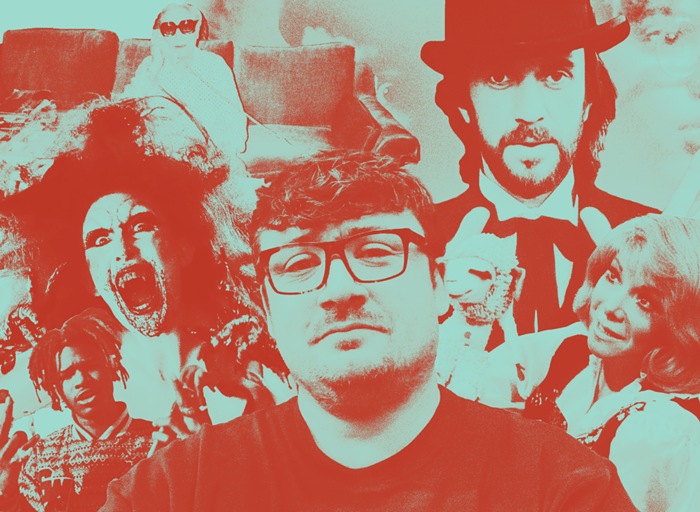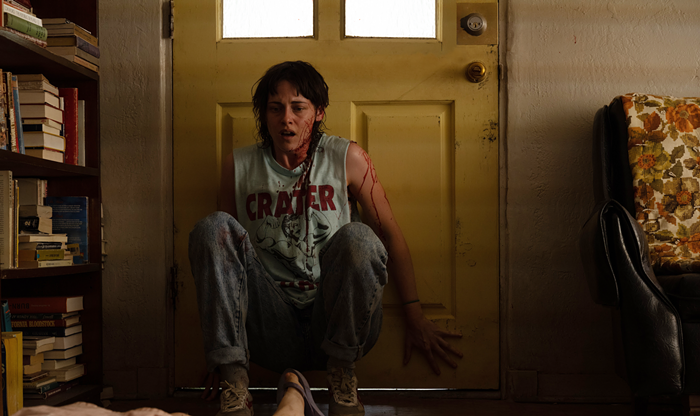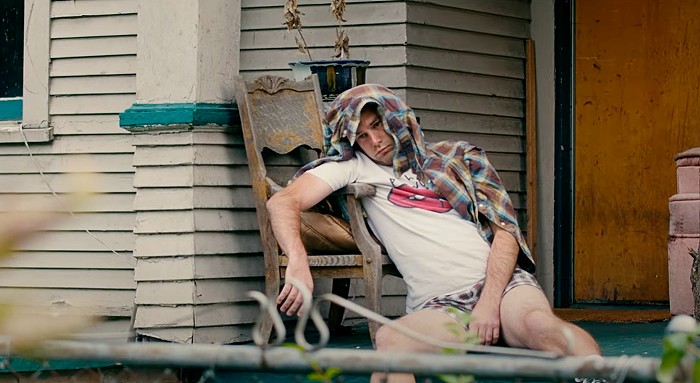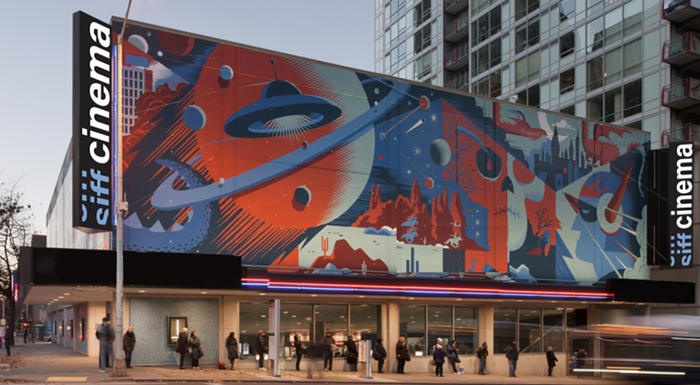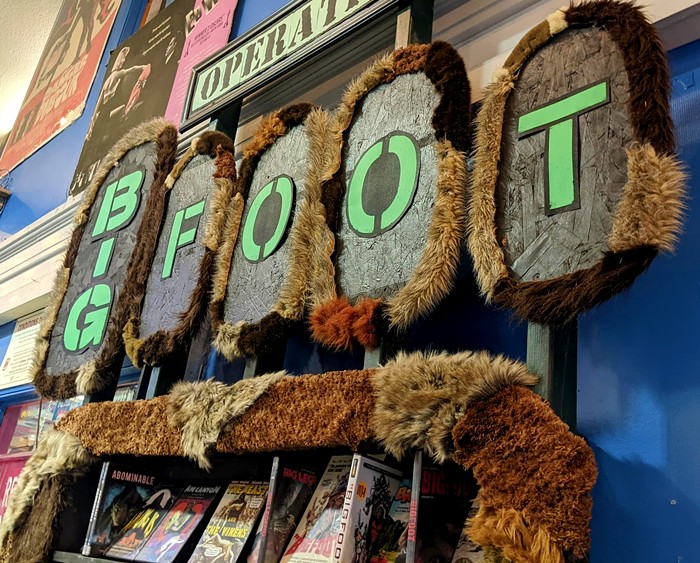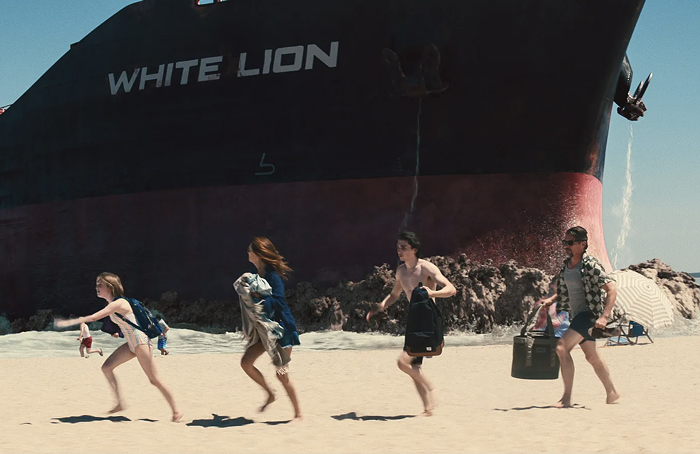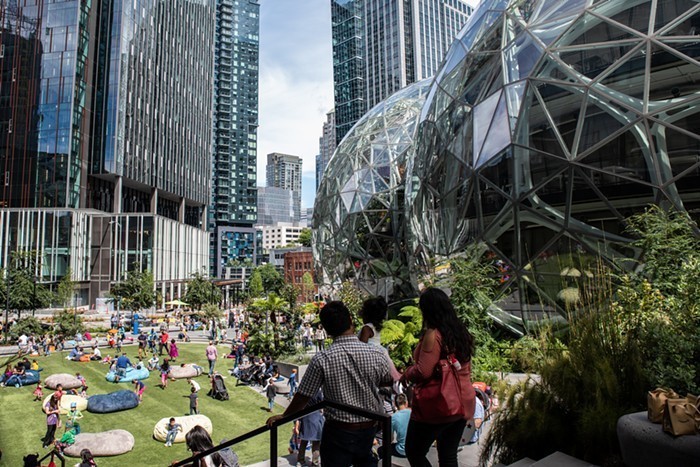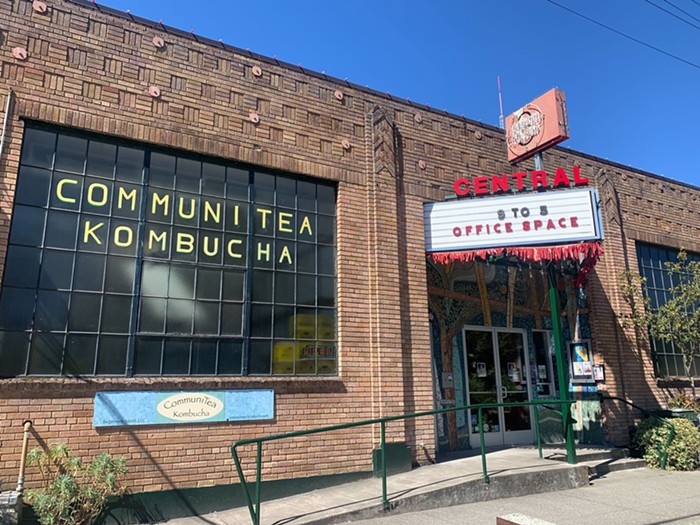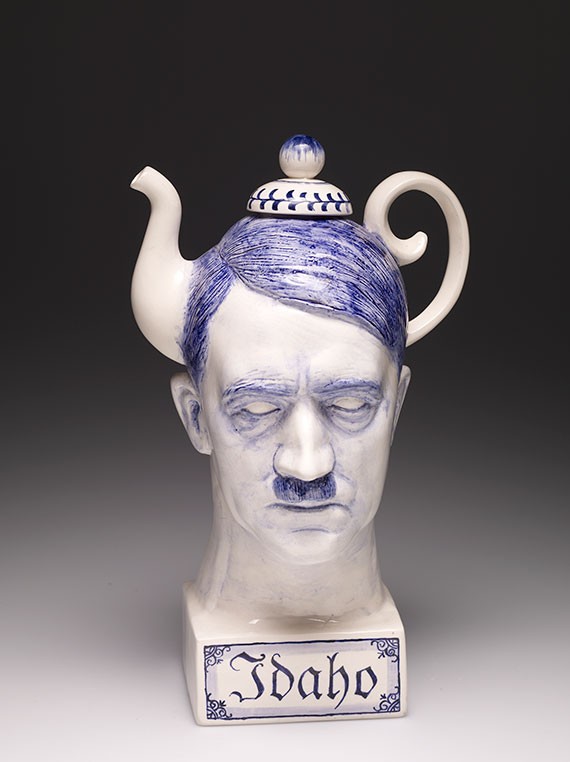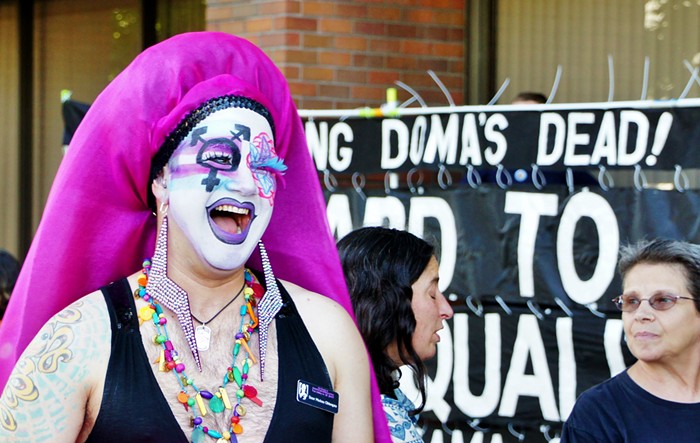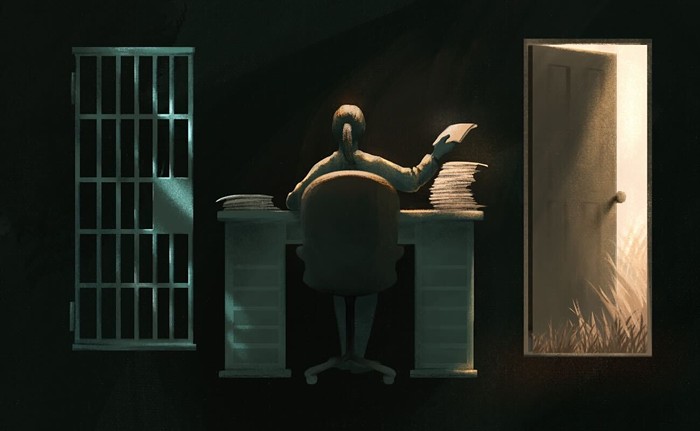
Outside In is the new feature-length film by Seattle director, Lynn Shelton. It premiered at the Toronto International Film Festival in 2017, is opening in the Emerald City on April 6, and had its US premiere at SXSW on March 10. It's about a convicted felon reentering society—reentering his former hometown—in Snohomish County, Washington. But the movie, which stars Edie Falco as Carol (the school teacher) and Jay Duplass as Chris (the ex-con), is also about the fleeting and changing nature of human connections, about generation gaps, and the difficulty of parsing passion from love. Though the handful of characters want more from life, they seem destined to recede into the ever-reaching lush, natural, rainy Washington landscape.
Shelton, who wrote Outside In with Jay Duplass, says she likes to investigate difficult relationships on camera and wanted her seventh feature-length film to be shot in a rural location outside of the bustling cityscape of her previous works. Shelton, who works in television—she has directed episodes of Mad Men, Fresh off the Boat, Master of None, and Glow—sat down to talk with me about the film, how it came about, and her creative process.
When did you decide to make Outside In? And did you know what you were undertaking in terms of breadth of responsibility with the project?
Well, let’s see. I started in a very impractical place, which is what I usually do. Which is just: where is my heart’s desire leading me? What’s a character, a relationship or a storyline that I can get passionate about and devote myself to? Because it’s a lot of blood, sweat and tears to make a movie—and then there’s the figuring out how it can be made.
A lot of times when I start a project like this, it originates with me. My initial point of inspiration is, more often than not, an actor. I have this shortlist of actors that I know I want to work with and I’m always trying different roles on them in my head. Like, who would be interested in playing a character like such-and-such. What haven’t they done before and is that in conjunction with what I would want to do?
For this film, Jay Duplass was the starting point. He and I have known each other for a number of years. I’ve worked with his brother, Mark, a couple of times, too. I think we might have met on the festival circuit? The two are, obviously, this amazing filmmaking duo. The first time I met Jay might have been at SXSW—I remember hanging out with him, walking around. He was this radiant soul. He was just so sweet and easy to talk to. I felt bathed in this warmth and goodwill. I just adored him. Then I saw him on Transparent and you could have knocked me over. He was such an amazing actor. I became obsessed. I wrote him and said, “I’m lightly stalking you. I really want to work with you and direct you!”
Later, I came to him with this idea. This very nascent idea about these two characters: a guy who just got out of prison after 20 years who’s fallen in love with his English teacher who had kept him alive mentally and spiritually while he was inside and also helped him get out. Then the two sort of have to deal with it as he reenters life. Jay said yes to the project and became very engaged. I felt very lucky.
What made you want to explore the theme of freedom in this film?
It’s interesting. We had long conversations about what to call the movie. For the longest time, words like “release” and “freedom” were circling around. And it is—the movie is about prisons in many ways. About Chris literally being in prison for 20 years, about Carol and how she imprisoned herself, boxed herself into this place where she feels like she’s made her bed and now she has to lie in it. Everyone is in their own prison and in a way I think. It’s a very common human theme.
One of the things I really liked about this: I’ve always been drawn to relationships that weren’t supposed to happen or take place. You know, we’re told we’re only supposed to be friends with or in love with certain kinds of people in our culture. People in our age group, things like that. That there’s a specific set of people we’re supposed to relate to. But you can have a true soul connection with somebody across those boundaries. I just find that idea so liberating.
Chris is searching for reentry in a place that’s kind of dying. Why did you want to explore this almost forgotten part of rural America?
I definitely wanted to make a film that wasn’t set in an urban environment, set not in an economically successful environment. I felt a deep urge to find a place where you felt the struggle of the humans living there a little bit more. And I love the smallness of Granite Falls. One of the things I love most in some of the shots is, along the hillsides, you can see these clear-cut foothills. It’s this fight between human industry and the country, between man and nature. There, the people are surrounded by nature; there are huge trees everywhere, a glowering sky and rain constantly. I feel like that interesting juxtaposition between our natural selves and civilized society—those borders—was important to investigate.
How did you plan to film the wet, dreary landscape?
My Director of Photography, Nate Miller, was so great to work with. He and I spent a lot of time in preparation for the movie, looking at reference films like Five Easy Pieces, films where you really feel the weather. We talked a lot about lenses, about camera style, color. But a lot of it was, honestly, dictated by just capturing what was really happening. There were a lot of exterior scenes. It was something I was acutely aware of. And when Jay came on as a co-writer, he kept adding more exterior scenes. I was like, “Jay, it’s going to be raining, it’s November in Washington State!” And he was like, “Great! You never seen rain on screen!” Cut to all of us out there, knee-deep in mud. Luckily we were able to find a couple of awnings to keep us dry part of the time.
When did you first feel that you really connected with Edie during the process?
I was really lucky because she was our last piece for the cast. The way that it played out, Edie had just worked, maybe a few months before, on set with Jay [Duplass]. So they’d met before and they knew each other, they’d spent a couple of days on set. And they had a warm, personal connection. So, when we reached out to her, she said, “Oh, I’d love to work with Jay!” And she also just really appreciated the role and the script. I’ve heard her say it before, there aren’t a ton of romantic leads for women her age. It’s just absurd, but it’s true.
She’s so good at face acting!
I didn’t have any idea how huge her eyes were! They’re these big, giant blue pools. Variety called her “luminescent” and, yes, that’s exactly what she is! After one of the scenes, Jay said to me, “Lynn, we have a secret weapon for our film. Edie’s face!”
How did you come up with the bicycle crutch for Chris?
I just love that. I remember seeing in [Granite Falls] 38-year-old men on tiny bikes, what look like little kid bikes to me. There’s something so poignant about it. And it’s so perfect for his character because, of course, he was emotionally stunted and arrested at that age. When he went to prison, he was 18 and still a kid. Even though he’s been traumatized, he never fully got to become a man in a real way, with normal development. So, he got out and sort of had to finish childhood.
Were you holding the camera during that super hot sex scene?
I was not holding the camera. I was right there though. I have to say, that scene, I don’t know if I’ve ever been prouder of a scene that I directed before. I love that scene. It all happens basically in one shot. We did probably four takes, god bless their hearts. Jay and Edie were great and game and wonderful. And talk about Edie’s face! Everything was happening in microseconds on her face. You feel everything she’s feeling.
What did you learn about yourself while making this movie?
This is a weird thing to say, but I thought while on set this time about the last time I was on set for a movie, four years ago with Laggies. I realized during Outside In that I’m a much different and much better filmmaker because of all the television I’ve done. I’ve been on set almost constantly in the last four years, learning every single time. I feel grateful about my evolution. From lenses to working with amazing actors, I’m really proud of how much knowledge I’ve accrued.
